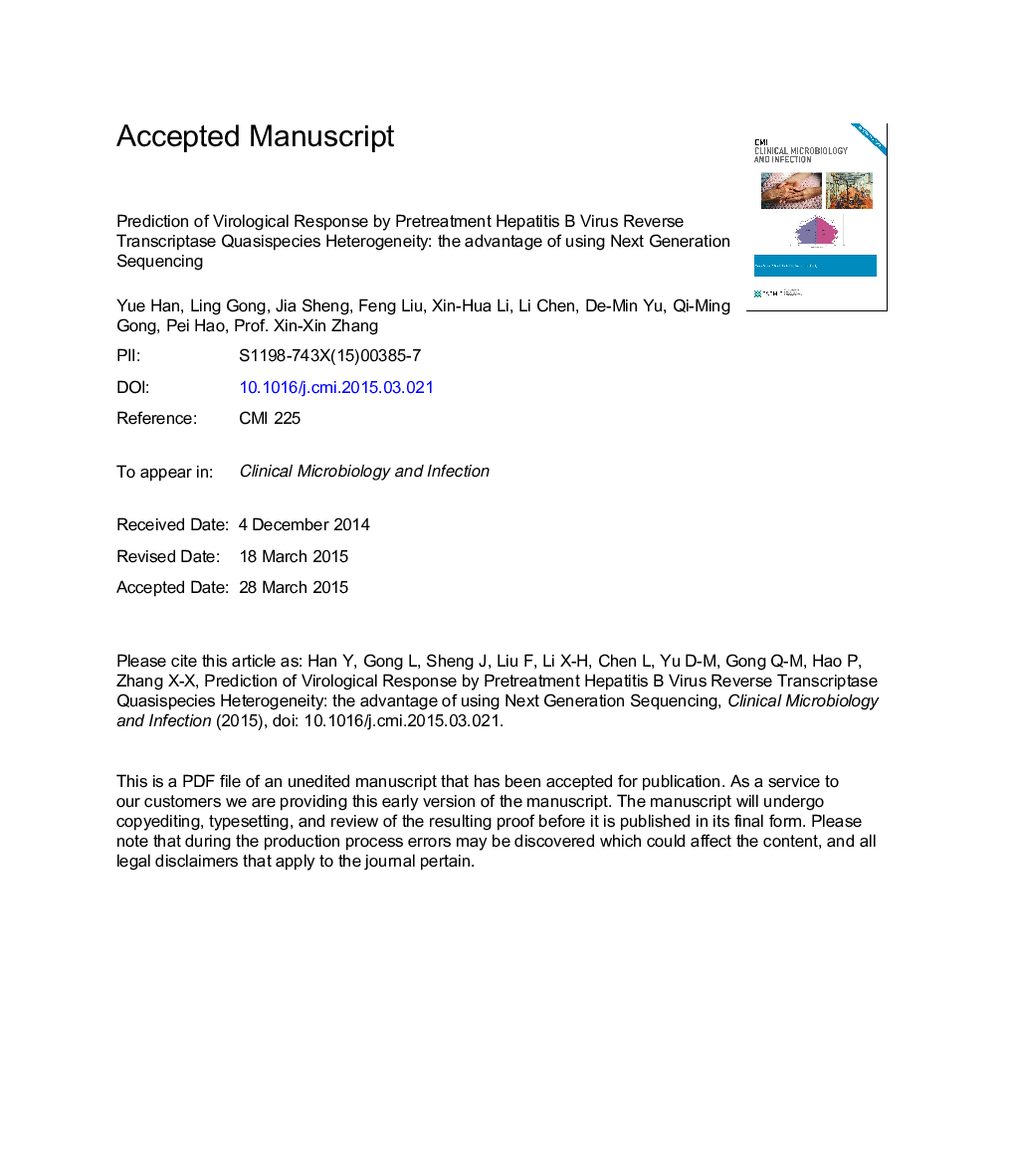| کد مقاله | کد نشریه | سال انتشار | مقاله انگلیسی | نسخه تمام متن |
|---|---|---|---|---|
| 6129582 | 1222160 | 2015 | 29 صفحه PDF | دانلود رایگان |
عنوان انگلیسی مقاله ISI
Prediction of virological response by pretreatment hepatitis B virus reverse transcriptase quasispecies heterogeneity: the advantage of using next-generation sequencing
دانلود مقاله + سفارش ترجمه
دانلود مقاله ISI انگلیسی
رایگان برای ایرانیان
کلمات کلیدی
موضوعات مرتبط
علوم زیستی و بیوفناوری
ایمنی شناسی و میکروب شناسی
میکروب شناسی
پیش نمایش صفحه اول مقاله

چکیده انگلیسی
Prediction of antiviral efficacy prior to treatment remains largely unavailable. We have previously demonstrated the clinical value of on-treatment hepatitis B virus (HBV) reverse transcriptase (RT) quasispecies (QS) evolution patterns. In this study, we aimed to elucidate the relevance for prediction of pretreatment HBV RT QS characteristics by comparing the performance of next-generation sequencing (NGS) and clone-based Sanger sequencing (CBS). Thirty-six lamivudine-treated patients were retrospectively studied, including 18 responders and 18 non-responders. CBS and NGS data of pretreatment serum HBV were used to generate RT QS genetic complexity and diversity scores, according to our previous studies. The ability of both methods to predict responsiveness was evaluated with receiver operating characteristic (ROC) curves. A cut-off value was generated on the basis of prediction ability. Responders had significantly higher pretreatment RT QS genetic complexity and diversity (in the first two parts, which overlapped with the S gene, at both the nucleotide and amino acid levels) than non-responders by NGS-based testing. NGS-based algorithms predicted response better than CBS in the ROC curve analysis. The mean distance of the second contig had the highest area under the curve (AUC) value. When the cut-off value was set to 0.007186, the difference between survival curves was significant (p 0.0090). Pretreatment HBV RT QS heterogeneity in the overlapping region of the RT and S genes could be a predictor of antiviral efficacy. NGS improves the predictions of virological outcomes relative to CBS algorithms. This may have important implications for the clinical management of subjects chronically infected with HBV.
ناشر
Database: Elsevier - ScienceDirect (ساینس دایرکت)
Journal: Clinical Microbiology and Infection - Volume 21, Issue 8, August 2015, Pages 797.e1-797.e8
Journal: Clinical Microbiology and Infection - Volume 21, Issue 8, August 2015, Pages 797.e1-797.e8
نویسندگان
Y. Han, L. Gong, J. Sheng, F. Liu, X.-H. Li, L. Chen, D.-M. Yu, Q.-M. Gong, P. Hao, X.-X. Zhang,